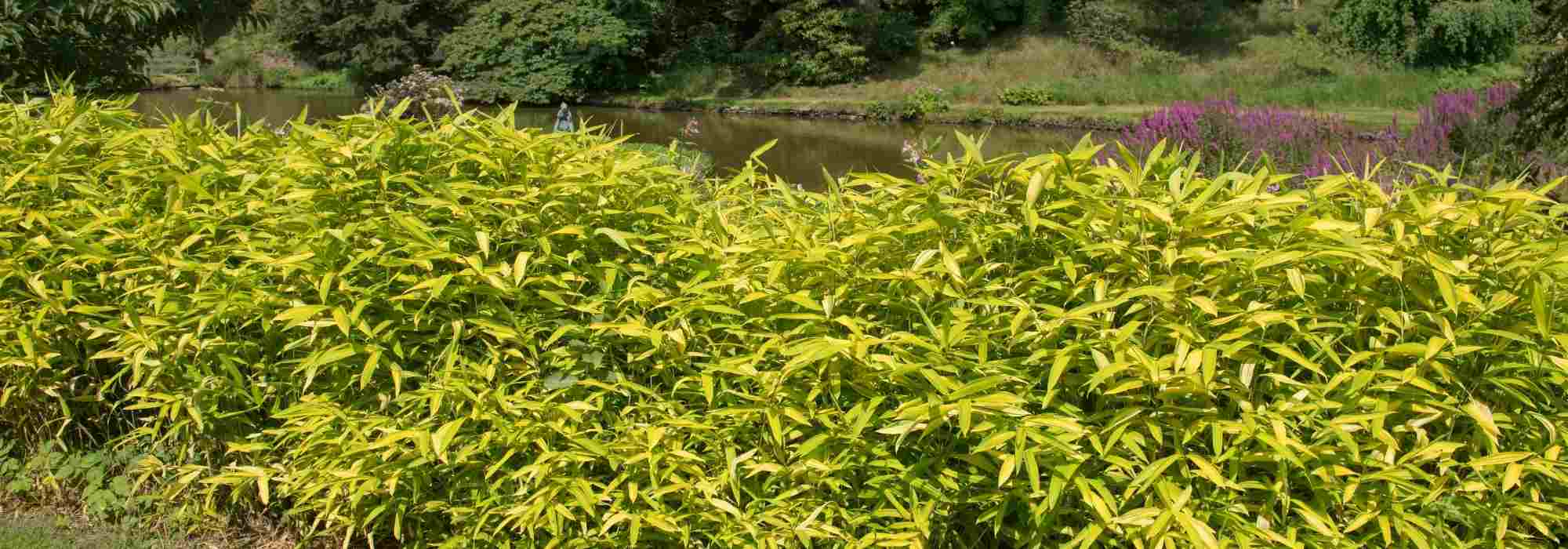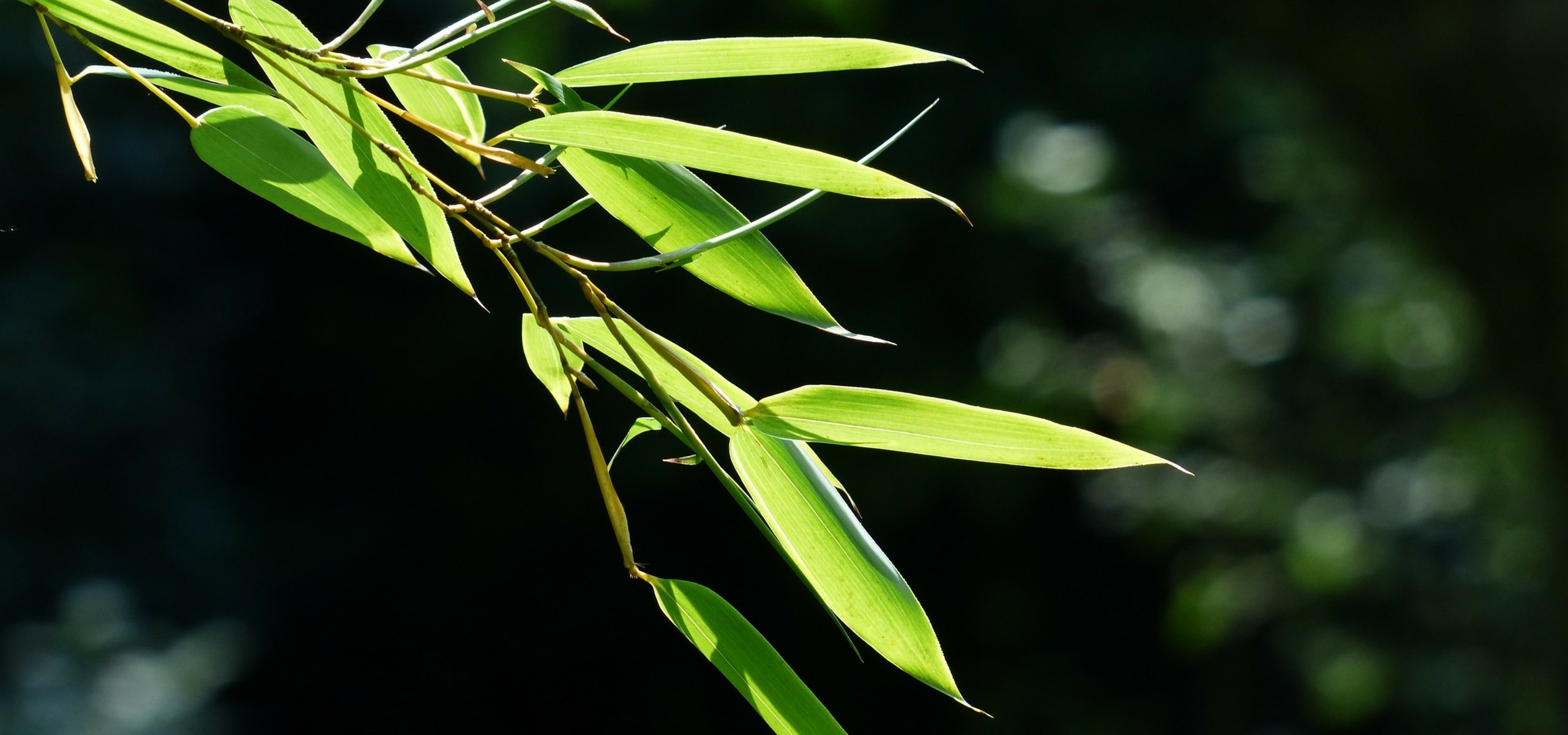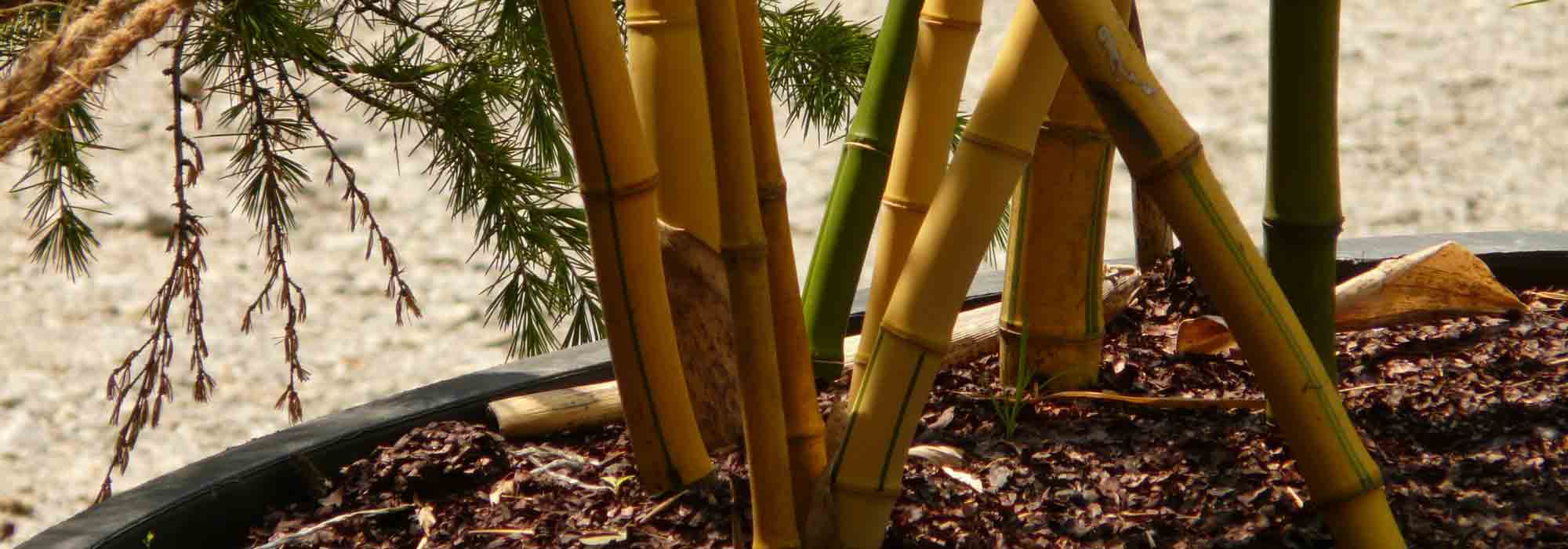

Pleioblastus pygmaeus Distichus - Dwarf Bamboo


Pleioblastus pygmaeus Distichus - Dwarf Bamboo


Pleioblastus pygmaeus Distichus - Dwarf Bamboo


Pleioblastus pygmaeus Distichus - Dwarf Bamboo
Pleioblastus pygmaeus Distichus - Dwarf Bamboo
Pleioblastus pygmaeus Distichus
Dwarf fern-leaf Bamboo, Dwarf Bamboo
Young plant received in a 2L / 3L pot with beautiful green foliage. When I took it out of the pot for planting, I discovered that the rootstocks are circling around in the container, so I took the time to gently untangle them and spread them out well around the planting hole. One rootstock was almost 50 cm (20in) long with already 3 culms. I hadn't planned on installing a rhizome barrier right away, but I think I'll need to do it fairly quickly.
Stephane, 11/02/2022
Special offer!
Receive a €20 voucher for any order over €90 (excluding delivery costs, credit notes, and plastic-free options)!
1- Add your favorite plants to your cart.
2- Once you have reached €90, confirm your order (you can even choose the delivery date!).
3- As soon as your order is shipped, you will receive an email containing your voucher code, valid for 3 months (90 days).
Your voucher is unique and can only be used once, for any order with a minimum value of €20, excluding delivery costs.
Can be combined with other current offers, non-divisible and non-refundable.
Home or relay delivery (depending on size and destination)
Schedule delivery date,
and select date in basket
This plant carries a 24 months recovery warranty
More information
We guarantee the quality of our plants for a full growing cycle, and will replace at our expense any plant that fails to recover under normal climatic and planting conditions.
Would this plant suit my garden?
Set up your Plantfit profile →
Description
The Pleioblastus pygmaeus Distichus is undoubtedly the smallest ground cover bamboo. Very low-growing, with a compact habit, it is adorned with small leaves and vibrant green foliage that is semi-evergreen depending on the severity of the winter. Spreading through trailing rhizomes, it eventually forms a beautiful carpet for slopes and elegant small hedges. It can even replace grass in non-trafficked areas of the garden. Once established, this bamboo requires little maintenance: a severe pruning in February-March is enough to rejuvenate it and give it fresh foliage. plant it in a natural, zen, or Japanese garden, or showcase it in a container on the terrace!
The Pleioblastus pygmaeus is a botanical bamboo species with a particularly compact habit. Like all bamboo, it belongs to the family of poaceae or grasses. This Pleioblastus is well adapted to our temperate climates and cold winters, it also tolerates temporary droughts, and thrives in all exposures and well-drained soils without excessive chalk. It dislikes heavy and waterlogged soils in autumn and winter. This bamboo has hollow, green, very thin canes, with a diameter of 1mm, and reaches less than 60cm (23.6in) in height. In cultivation, it is generally maintained at a height of 20cm (7.9in) through one or two annual prunings. It has rapid growth and spreads through its trailing rhizomes (a characteristic that will be more or less pronounced depending on the climate and soil type) over large areas, forming a lush carpet. Its semi-evergreen foliage consists of small leaves, with a beautiful bright green colour on the top and lighter on the underside. This bamboo tolerates root competition from other plants very well, and can even overpower them in some cases.
Rugged, hardy, and undemanding, this bamboo succeeds almost everywhere, to the point of becoming invasive. To contain its growth, we recommend giving it a large space or using anti-rhizome barriers to protect neighbouring plants from its vigour. It is perfectly suited for zen, wild, exotic, or contemporary gardens. Tolerating full sun as well as shade in hot and sunny climates. It can be used on the edge of woodland, in front of a curtain of taller bamboo (Fargesia, Phyllostachys), at the base of weeping conifers (Juniperus Horstmann, Cedrus deodara Pendula), in light woodland, or as ground cover under trees such as the caramel tree, Acer griseus, or Japanese maples. It can also create long, low borders, to replace boxwood edging for example along a path or a flowerbed. It can even replace lawns in less frequented areas of the garden. This dwarf bamboo can also be grown in a pot to decorate the balcony, terrace, or a very bright and minimally heated interior.
Pleioblastus pygmaeus Distichus - Dwarf Bamboo in pictures




Plant habit
Foliage
Botanical data
Pleioblastus
pygmaeus
Distichus
Poaceae
Dwarf fern-leaf Bamboo, Dwarf Bamboo
Cultivar or hybrid
Other Pleioblastus
View all →Planting and care
The Pleioblastus pygmaeus Distichus is an undemanding bamboo that is easy to grow in all exposures. It thrives in any well-drained soil without excessive chalk but dislikes waterlogged soils in autumn and winter. Even though it is very accommodating regarding the nature of the soil, it prefers neutral to slightly acidic soil, moist but not too dry throughout the year. In the ground, it tolerates moderate periods of drought quite well. Preferably plant in late summer or autumn, or even in spring. It will spread more or less, dependent on the climate and nature of the soil. It is advisable to install a rhizome barrier when planting to limit its spread. It can withstand temperatures as low as -15°C (5°F), but its foliage will be burned and therefore deciduous below -10/-12°C (15-10.4°F). For pot cultivation, use well-draining soil and provide organic fertilizer twice a year to prevent leaf yellowing. Propagation can be done by rhizome cutting or clump division.
This dwarf bamboo will benefit from being pruned every year in late winter or early spring to encourage the development of entirely new foliage.
Planting period
Intended location
Care
Planting & care advice
-
, onOrder confirmed
Reply from on Promesse de fleurs
Similar products
Haven't found what you were looking for?
Hardiness is the lowest winter temperature a plant can endure without suffering serious damage or even dying. However, hardiness is affected by location (a sheltered area, such as a patio), protection (winter cover) and soil type (hardiness is improved by well-drained soil).

Photo Sharing Terms & Conditions
In order to encourage gardeners to interact and share their experiences, Promesse de fleurs offers various media enabling content to be uploaded onto its Site - in particular via the ‘Photo sharing’ module.
The User agrees to refrain from:
- Posting any content that is illegal, prejudicial, insulting, racist, inciteful to hatred, revisionist, contrary to public decency, that infringes on privacy or on the privacy rights of third parties, in particular the publicity rights of persons and goods, intellectual property rights, or the right to privacy.
- Submitting content on behalf of a third party;
- Impersonate the identity of a third party and/or publish any personal information about a third party;
In general, the User undertakes to refrain from any unethical behaviour.
All Content (in particular text, comments, files, images, photos, videos, creative works, etc.), which may be subject to property or intellectual property rights, image or other private rights, shall remain the property of the User, subject to the limited rights granted by the terms of the licence granted by Promesse de fleurs as stated below. Users are at liberty to publish or not to publish such Content on the Site, notably via the ‘Photo Sharing’ facility, and accept that this Content shall be made public and freely accessible, notably on the Internet.
Users further acknowledge, undertake to have ,and guarantee that they hold all necessary rights and permissions to publish such material on the Site, in particular with regard to the legislation in force pertaining to any privacy, property, intellectual property, image, or contractual rights, or rights of any other nature. By publishing such Content on the Site, Users acknowledge accepting full liability as publishers of the Content within the meaning of the law, and grant Promesse de fleurs, free of charge, an inclusive, worldwide licence for the said Content for the entire duration of its publication, including all reproduction, representation, up/downloading, displaying, performing, transmission, and storage rights.
Users also grant permission for their name to be linked to the Content and accept that this link may not always be made available.
By engaging in posting material, Users consent to their Content becoming automatically accessible on the Internet, in particular on other sites and/or blogs and/or web pages of the Promesse de fleurs site, including in particular social pages and the Promesse de fleurs catalogue.
Users may secure the removal of entrusted content free of charge by issuing a simple request via our contact form.
The flowering period indicated on our website applies to countries and regions located in USDA zone 8 (France, the United Kingdom, Ireland, the Netherlands, etc.)
It will vary according to where you live:
- In zones 9 to 10 (Italy, Spain, Greece, etc.), flowering will occur about 2 to 4 weeks earlier.
- In zones 6 to 7 (Germany, Poland, Slovenia, and lower mountainous regions), flowering will be delayed by 2 to 3 weeks.
- In zone 5 (Central Europe, Scandinavia), blooming will be delayed by 3 to 5 weeks.
In temperate climates, pruning of spring-flowering shrubs (forsythia, spireas, etc.) should be done just after flowering.
Pruning of summer-flowering shrubs (Indian Lilac, Perovskia, etc.) can be done in winter or spring.
In cold regions as well as with frost-sensitive plants, avoid pruning too early when severe frosts may still occur.
The planting period indicated on our website applies to countries and regions located in USDA zone 8 (France, United Kingdom, Ireland, Netherlands).
It will vary according to where you live:
- In Mediterranean zones (Marseille, Madrid, Milan, etc.), autumn and winter are the best planting periods.
- In continental zones (Strasbourg, Munich, Vienna, etc.), delay planting by 2 to 3 weeks in spring and bring it forward by 2 to 4 weeks in autumn.
- In mountainous regions (the Alps, Pyrenees, Carpathians, etc.), it is best to plant in late spring (May-June) or late summer (August-September).
The harvesting period indicated on our website applies to countries and regions in USDA zone 8 (France, England, Ireland, the Netherlands).
In colder areas (Scandinavia, Poland, Austria...) fruit and vegetable harvests are likely to be delayed by 3-4 weeks.
In warmer areas (Italy, Spain, Greece, etc.), harvesting will probably take place earlier, depending on weather conditions.
The sowing periods indicated on our website apply to countries and regions within USDA Zone 8 (France, UK, Ireland, Netherlands).
In colder areas (Scandinavia, Poland, Austria...), delay any outdoor sowing by 3-4 weeks, or sow under glass.
In warmer climes (Italy, Spain, Greece, etc.), bring outdoor sowing forward by a few weeks.






















































